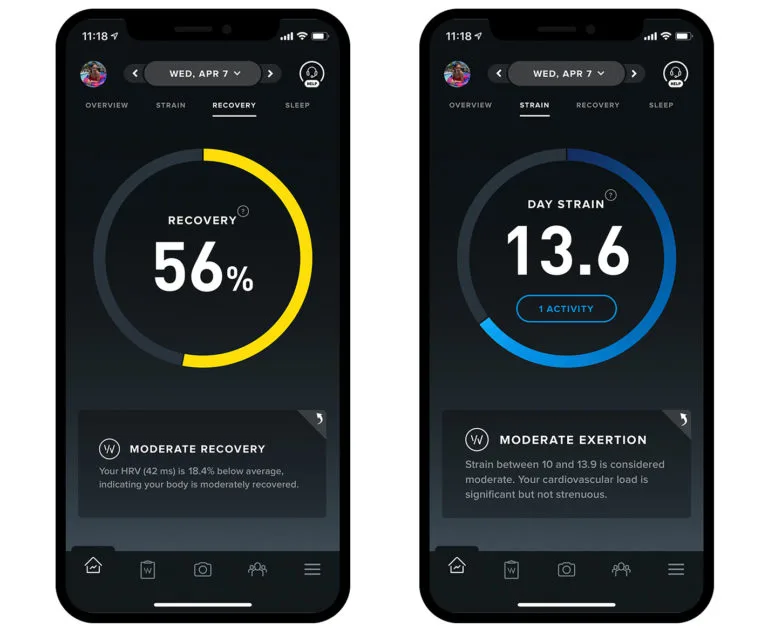Topics
- Article
- Training & Exercise
Autoregulation to Improve Training, Exercise More Efficiently & Avoid Burnout

We discuss the importance of autoregulation, listening to your body and training for what it is signaling it can handle.
“Autoregulation” is a popular buzzword when it comes to fitness and training, but what does it actually mean and how can you work out smarter because of it?
What is Autoregulation?
From a study by renowned scientist and bodybuilder Eric Helms, “autoregulation adjusts variables at an individualized pace per performance, readiness, or recovery.” In another article, Helms wrote “autoregulation is simply a systematic approach to implementing something every trainer worth their salt knows is of supreme importance: the principle of individuality. … Autoregulation, simply put, is just a structured approach for embedding a respect for individual variation within a program.” Basically what it means is that instead of following a strict training regimen, you should listen to your body and adjust your workload to fit what you’re capable of each day. Generally this is based on how you believe you are performing compared to previous workouts, or how difficult exercise feels in relation to what is normal for you.
Why is Autoregulation Training Important?
To an extent, the concept of autoregulation training resembles the classic fable “The Tortoise and the Hare.” If you push yourself too hard, you’ll burn out (overtrain) and not “win” in the long run. Making fitness gains is “a marathon not a sprint,” so to speak. It’s important to realize that you can’t actually get better every single time you work out, your body just isn’t built that way. Some days it is more equipped to take on heavy training loads than others and you won’t improve your fitness if your body isn’t ready to handle the stress you put it through. Implementing methods of autoregulation into your training will better enable you to avoid injury and burnout, and allow you to achieve your fitness goals in a more efficient manner.
How Do You Train Smarter with Autoregulation?
A common method of autoregulation involves using something like the Borg Scale to rate your level of perceived exertion. This lets you quantify how hard you believe you are exerting yourself during exercise. Autoregulation consists of taking stock of how you feel beforehand (as well as other variables like amount of sleep, nutrition, hydration, etc) rating your performance for the workout and assessing whether or not it met your expectations. A key aspect of this is keeping a journal or log of the details of your workouts and evaluations of them. Over time you’ll begin to get a sense of the specific exertion levels various workouts require, and how this is impacted by the way you’re feeling that day. You can then use this knowledge to effectively dial back or ramp up your exercise volume and intensity based on what you believe your body is capable of.
Autoregulation During Exercise Has Its Flaws
One common hindrance to autoregulation is the competitive nature of athletes. This drive inherently pushes many of us to overdo it--we constantly strive to set new personal bests and perform better than we did before. Intentionally putting forth anything less than your best effort can be difficult to swallow, even with the knowledge that it’s for your long-term benefit. The subjectivity of it can also be problematic in a variety of ways. How do you know if you’re adjusting your training volume for the right reasons? Our brains may easily confuse “my body can’t handle more than this” with “I just don’t feel like it today.” On top of that, the way our bodies are feeling is often misleading...
WHOOP: The Perfect Tool for Autoregulation
Our Founder and CEO Will Ahmed started WHOOP after being a college athlete who regularly overtrained. He realized that how he was feeling was not a reliable indicator of his body’s readiness to perform, so he set out to create a product that was. He discovered that by tracking things like resting heart rate, heart rate variability, respiratory rate and sleep, we could unlock secrets our bodies are trying to tell us and better understand our ability to execute at a high level. WHOOP uses this biometric data to calculate your recovery each morning--how prepared your body is to take on strain. Our strain metric quantifies the cardiovascular exertion put on your body, over the course of an entire day and for individual workouts and activities. Inspired by the Borg Scale, WHOOP strain is an objective measure of the impact of your exercise.

The app’s Strain Target makes exertion-level recommendations based on your daily recovery, then monitors your strain in real time as you work out to let you know exactly when you’ve reached your optimal amount. Additionally, WHOOP features a Sleep Planner that factors in your strain from the day to suggest ideal bed and wake times in order to get the best sleep and maximize your recovery the next morning. Learn More: Why WHOOP Doesn’t Count Steps
Study Results Show Fewer Injuries, More Efficient Training
A recent study compared runners who modified their training plans based on WHOOP recovery with others who followed a static training program. The results were staggering. Athletes who reduced their workload when their recovery suggested their body needed rest were up to 32.4% less likely to get injured and also spent as many as 80 fewer minutes per week training--all while making similar improvements in their 5k times. Learn More: Podcast 107 - Training Based on WHOOP Recovery Improves Performance, Reduces Injury